If you visit the museum for the first time, you will be surprised by the pyramid-shaped entrance. Use the time you lose to pass the bomb check and buy a ticket to look at it, because it is a monument of the first order.
I already mentioned the Egyptian department, where you can easily spend a full day. There are portraits of the Egyptian kings and objects from daily life, and what is even better: the full history is dealth with, so you will also find objects from the first millennium BCE. The Greek, Roman, and Coptic age are not ignored either, although you need to go to Greek department for the royal portraits of the Ptolemies.
The Egyptian department is deservedly famous, and attracts many visitors, who are usually exhausted when they are half-way their tour. Usually, they will take the shortest route to the exit, which brings them through the departments of Cypriote, Arab, Palmyrene, and Phoenician art – which are, as a consequence, full of people who are not interested in the objects. That is a pity, because these rooms alone justify a trip to Paris. Still, if you manage to ignore the crowd of tired visitors to the Egyptian department, you will certainly enjoy coffins from Sidon, Byblos, and Carthage, Nabataean inscriptions, and statues from Cyprus. One of my favorites is a relief of one of the divine triad of Palmyra. You will need half a day to study it well.
Next to it is the Oriental department. The most famous object is, of course, the Code of Hammurabi. Don’t concentrate on the diorite monolith only, but also look in the small display in the same room, because there you will see cuneiform tablets with the same text – one of them written more than a millennium later and proving that these laws had become some kind of Mesopotamian classic, and it is probably no coincidence that the division of these Old Babylonian laws returns in the Ten Commandments.
The Roman department is surprisingly small. Yet, there is a lot of fine sculpture, including a nice series of portraits of Roman rulers. Next to it is a comparatively small Etruscan department. A gallery of rather mediocre statues brings you to the room devoted to Roman art that was later restored, which is great fun: usually, you can immediately see which part is ancient and which is an addition. (Here, you will also find Canova’s famous Amor and Psyche.) You need about half a day to see it all, read the explanatory signs, and take your photos.
The Greek department is larger – you again need a full day to study it all. The two most famous pieces are the expressive Nike of Samothrake and the famous Venus of Milo. The latter is more or less the museum’s raison d’être. Napoleon had looted the Italian museums, but after he had found his Waterloo, all those works of art had to be returned. In an age in which it was believed that inspiration by great art created great minds, and that Greek art was the most inspirational, the emptying of the Louvre was believed to be a national disaster, but fortunately, the Venus of Milo was found. Now, France could compete again with the British, who had the Elgin Marbles. That the armless deity was a Hellenistic and not a Classical statue, was ignored – the inscription which proves it, is now conveniently lost.
The crowds are very large, and you may count yourself lucky that I did not bring you to the paintings. This makes a visit to the Louvre a bit difficult, and you must prepare yourself well; fortunately, the museum’s website is excellent. Four days is the minimum for the ancient departments.
Finally, I must mention one little gem that is often ignored and where you can, consequently, quietly look at the objects: the room with metal objects. There is some fine silver work, but you will also see the helmet of a gladiator, a nice statuette of the Tyche of Antioch, the head of Demetrius Poliorcetes, a hoplite’s panoply, a curse tablet from the Crimea, Roman military diplomas, and so on.
But unfortunately, that’s the only part of the museum where you will not meet many other people. In fact, the museum is too big, and I think that it would be wiser to split it into smaller museums.
This museum was visited in 1984, 1989, 2008, 2010, 2020.
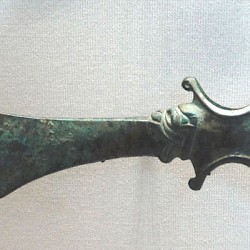 Susa, Battle axe
|
 Susa, Stone fish
|
 Alexandria, Tombstone of Longinus of II Traiana
|
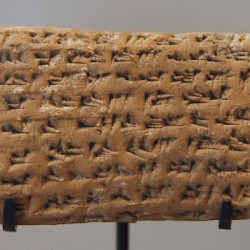 Susa, Achaemenid administrative document
|
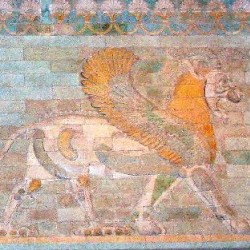 Susa, Soldiers' Relief, Mythological creatures
|
 Statues of Sekhmet
|
 Relief of a scribe
|
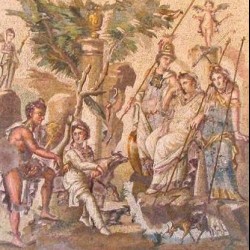 Antioch, Judgment of Paris
|
 Matidia
|
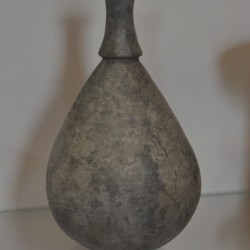 Bottle from Tepe Hesar level II
|
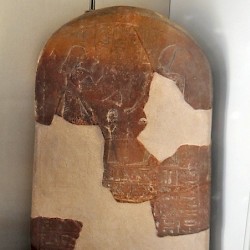 Ugarit, Temple of Baal, Stele with the king of Ugarit in front of the god Baal Saphon
|
 Pharsalus, Funerary stela with a relief of a flower offering
|
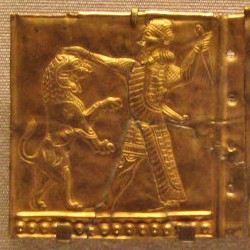 Susa, Gold plate with royal warrior
|
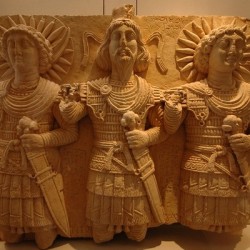 Wadi Miyah, Palmyrene triad: Aglibol (Moon), Ba'al Šamem (Lord of Heaven), and Malekbel (Sun)
|
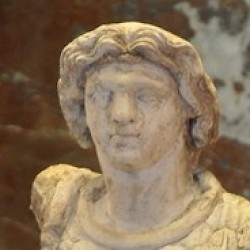 Alexandria, Alexander the Great as City Founder
|
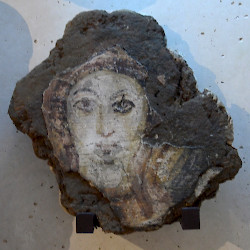 Bawit, Portrait of a lady
|
 Rhodes, Mycenaean jar with a bull (LH IIIa2)
|
 Ptolemy II Philadelphus
|
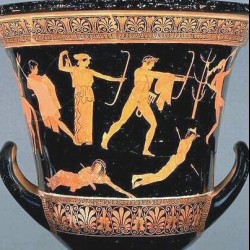 Artemis and Apollo killing the Niobids
|
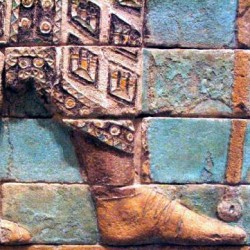 Susa, Soldiers' Relief, Immortal, Counterweight of a spear
|
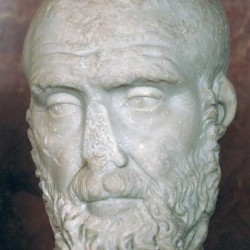 Pupienus
|
 Esarhaddon and his mother attend the restoration of Babylon
|
 Assos, Temple of Athena, Relief of a symposium
|
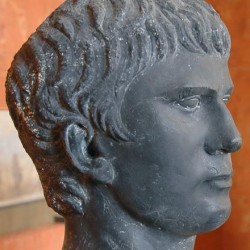 Agrippa Postumus
|
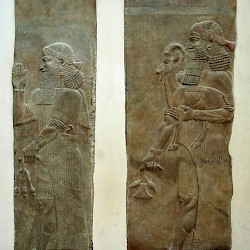 Khorsabad, Relief of two courtiers
|
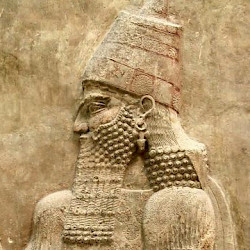 Khorsabad, Relief of Sargon and Sennacherib, king Sargon
|
 Apollonia, Relief of two hoplites
|
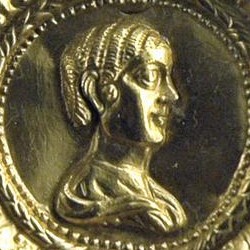 Salonina
|
 Arsinoe II
|
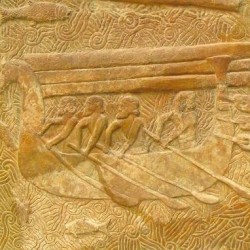 Khorsabad, Relief of rafts on a great river
|
 Susa, Temple of the Šutrukids, Inscription
|
 Bawit, Icon of Christ and St.Menas
|
 Susa, Soldiers' Relief
|
 Shabaqo
|
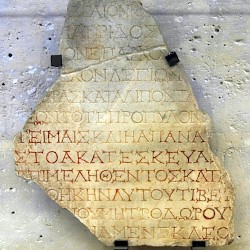 Smyrna, Honorific decree for an officer of VI Ferrata
|
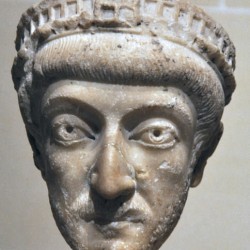 Theodosius II
|
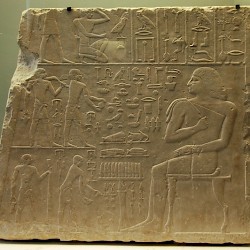 Giza, Diner of Nefer
|
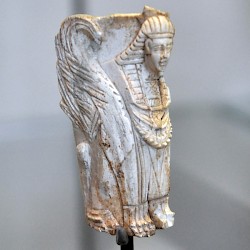 Oea, Punic sphinx
|
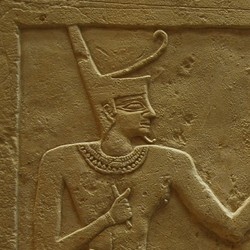 Montuhotep II wearing the red deshret crown
|
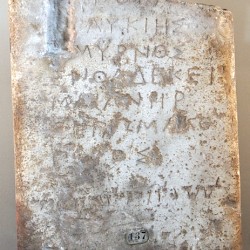 Cyprus, Bilingual Greek-Phoenician inscription
|
 Susa, Middle-Elamite basrelief of warrior gods
|
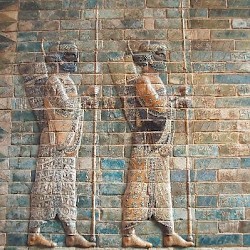 Susa, Soldiers' Relief
|
 Bosra, Nabataean altar
|
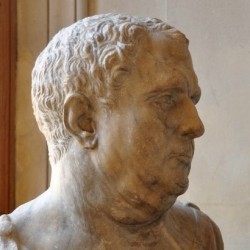 Portrait of a man, third quarter of the first century CE (the so-called "Vitellius")
|
 Moabite warrior god
|
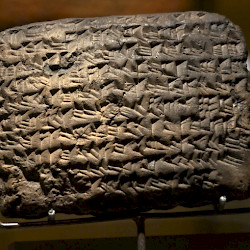 Sippar, Contract from the reign of Xerxes about a canal
|
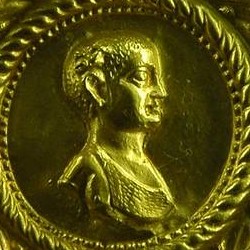 Valerian Jr
|
 Assos, Temple of Athena, relief, Triton
|
 Charlemagne
|
 Ptolemy IV Philopator or Ptolemy VI Philometor
|
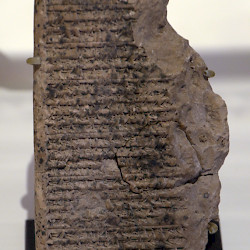 Uruk, Cuneiform tablet with first use of a zero
|
 Furnos Minus, Christian funerary mosaic
|
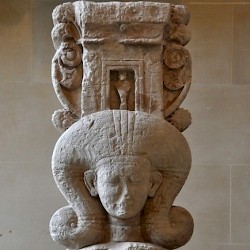 Kition, Egyptianizing capital
|
 Justinian I (Barberini Ivory)
|
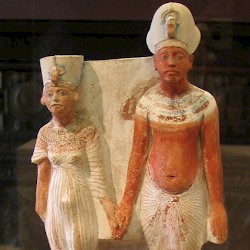 Nefertiti and Akhenaten
|
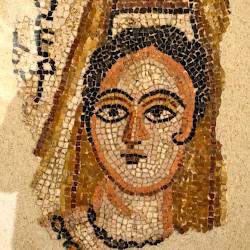 Edessa, Mosaic of a lady
|
 Heraclius and Khusrau
|
 Susa, Stone relief with a banquet scene
|
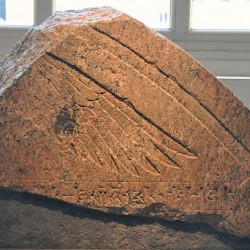 Chalouf, Darius' DZb inscription
|
 Pittacus
|
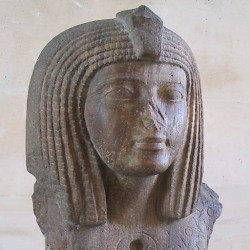 Osorkon I
|
 Khorsabad, Foundation Tablet
|
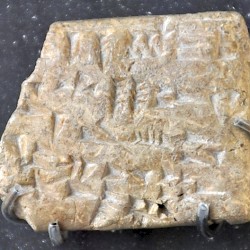 Ugarit, Alphabet tablet
|
 Nimrud, Relief of an Anatolian fort
|
 Hermopolis, Portrait of a Cleopatra I, Cleopatra II, or Berenice III
|
 Tayma, Dedication to Salm
|
 Caere, Sarcophagus of the Spouses
|
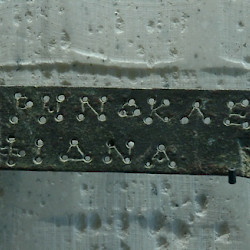 Athens, Heliaia, Allotment plate
|
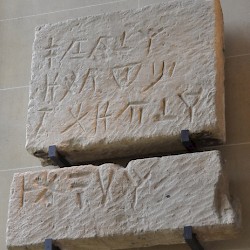 Old Paphos, Epitaph of King Echetimus
|
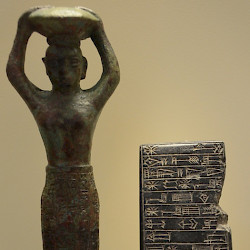 Ur, Foundation statuette of Amar-Sin
|
 Boy with hoop and rooster
|
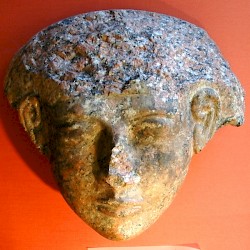 Fragment of the sarcophagus of Sety II
|
 Babylonian map of the western Zagros. A road, a mountain, and a river are indicated.
|
 Pyla, Temple of Apollo, Portrait of a man
|
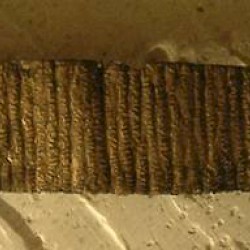 Beirut, Christian phylacterium, invoking the protection of several celestial beings to protect one Alexandra
|
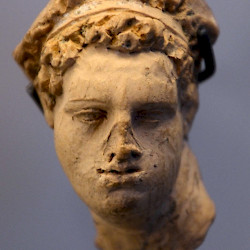 Mithridates V Euergetes
|
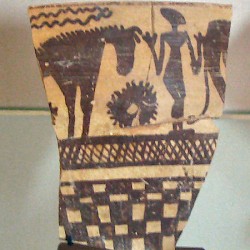 Tepe Sialk, Sherd from the fourth millennium BCE
|
 Yemen, Woman's head
|
 Susa, Dedication to Inšušinak
|
 Susa, Silver rhyton
|
 Nicomedia, Hellenistic Funerary relief
|
 Coptic jar with decoration of a woman with wild animals
|
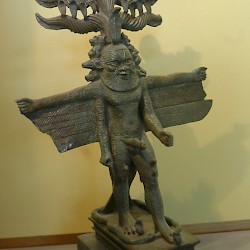 Statuette of Bes, dedicated by Pakher, chancellor of king Psamtek I
|
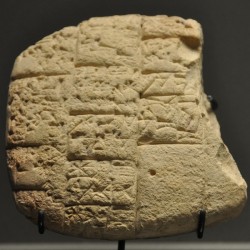 Girsu, Tablet with a fragment of the Sumerian Creation Epic
|
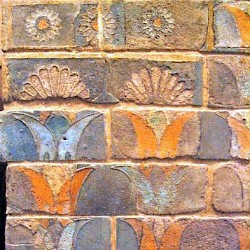 Susa, Soldiers' Relief, Flowers
|
 Rhodes, Mycenaean cup (LH IIIa2)
|
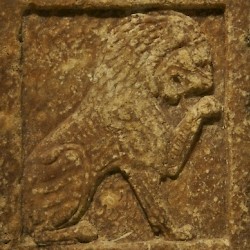 Byblos, Relief of a lion
|
 King of the Eleventh/Twelfth Dynasty
|
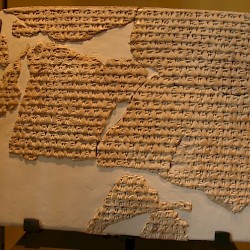 Susa, Apadana, Inscription DSf (Old Persian)
|
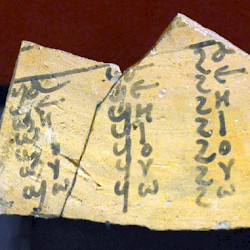 Ostracon with a Coptic Writing Exercise (Thebaid)
|
 Yemen, Relief of a bird eating grapes
|
 Cirta, Sanctuary of El-Hofra, Votive stela
|
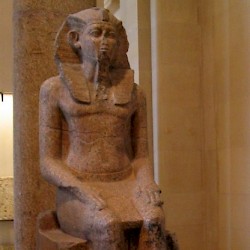 Sobekhotep IV
|
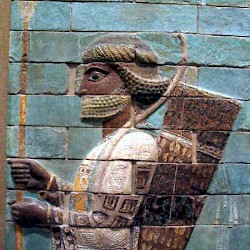 Susa, Soldiers' Relief
|
 Ptolemy XI Alexander, gold sealing ring
|
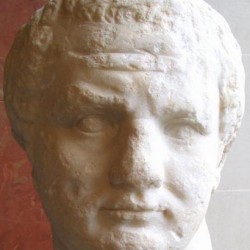 Titus
|
 Corinth, Hoplite battle (Tydeus painter)
|
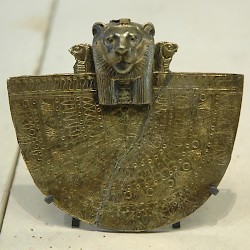 Aegis of Osorkon IV
|
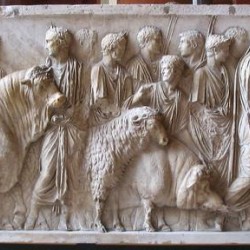 Suovetaurilia
|
 Demetrius I Poliorcetes
|
 Ptolemy IV Philopator
|
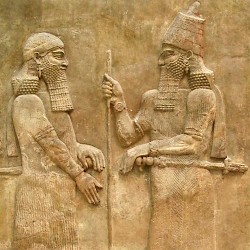 Khorsabad, Relief of Sargon and Sennacherib
|
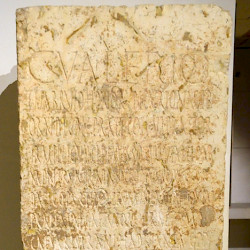 Beirut, Tombstone of Valerius Rufus of VII Claudia
|
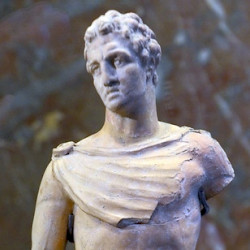 Smyrna, Attalus II Philadelphus
|
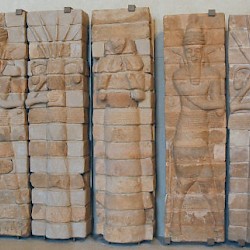 Susa, Temple of the Šutrukids, Relief
|
 Antiochus III the Great
|
 Tyre, Hellenistic building inscription from Al-Ma'shook
|
 Susa, Neo-Elamite decoration (dragon)
|
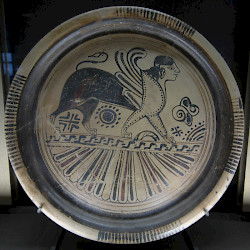 Rhodes, Dish with a sphinx
|
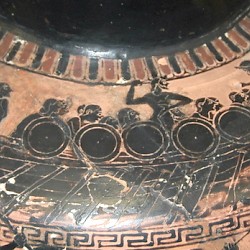 Vase painting of an archaic Greek galley
|
 Susa, Temple of the Šutrukids, Relief: the bull-man
|
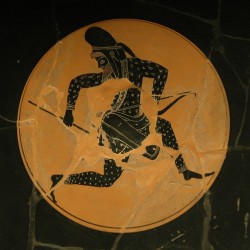 Athens, Black-figured dish with a Scythian archer
|
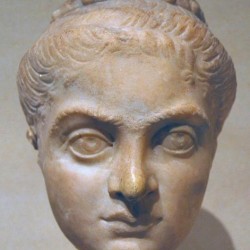 Fausta
|
 Susa, Statue of queen Napirasu, wife of Untaš-Napiriša
|
 Choga Zanbil, Model
|
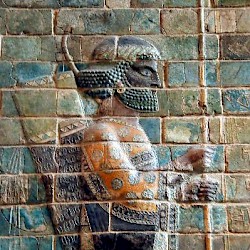 Susa, Soldiers' Relief
|
 Ptolemy X Alexander
|
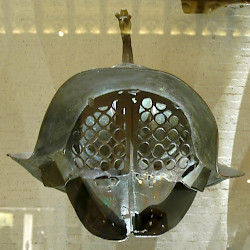 Gladiator helmet
|
 Saba, the Arab warrior Mushayqat Hamayat ibn Yusuf on a dromedary
|
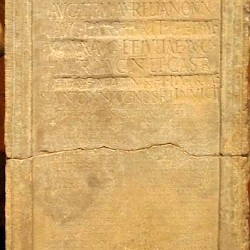 Lambaesis, Rules for the trumpetters of III Augusta
|
 Figurine from Bactria
|
 Sallustia Orbiana
|
 Arsinoe III
|
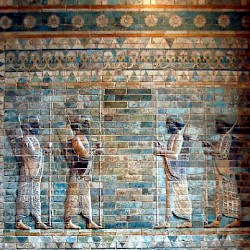 Susa, Soldiers' Relief with inscription DSm
|
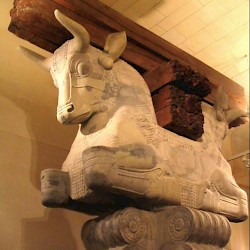 Susa, Apadana, Capital
|
 Geta
|
 Alexander, Statuette from Lower Egypt
|
 The Albani Alexander
|
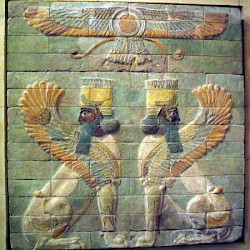 Susa, Soldiers' Relief, Sphinxes
|
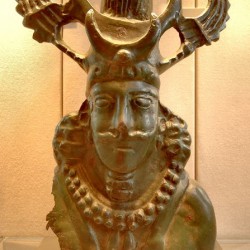 Ladjvard, Sasanian king, perhaps Peroz
|
 Susa, Stela of Adda-hamiti-Inšušinak
|
 Delos, Portrait of Alexander the Great
|
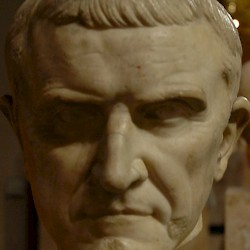 Crassus
|
 Marib, Dedication to Almaqah, detail
|
 The Tyche of Antioch (figurine)
|
 Alexander IV
|
 Alexander I Balas
|
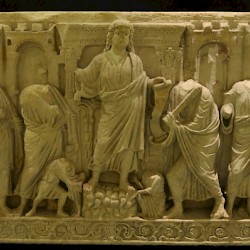 Rome, S. Pietro, Sarcophagus with Christ as Lawgiver
|
 Mithridates VI Eupator of Pontus
|
 Nineveh, Palace of Aššurbanipal, Sumerian-Akkadian Dictionary
|
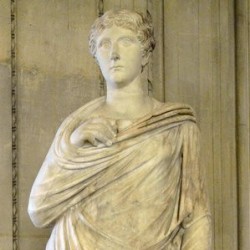 Antonia Minor
|
 Drawing of Amenhotep I
|
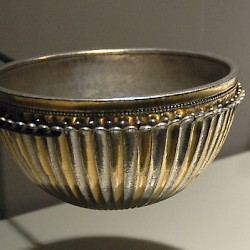 Susa, Sasanian cup
|
 Susa, Middle-Elamite model of a sun ritual
|
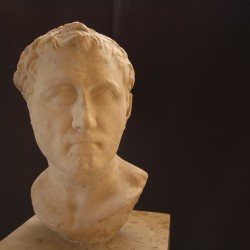 Pompey the Great. Louvre, Paris (France)
|
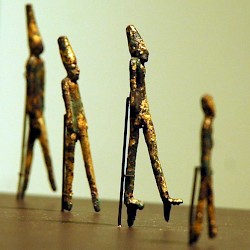 Byblos, Temple of Baalat, Figurines
|
 Corinth, Small painting of Poseidon
|
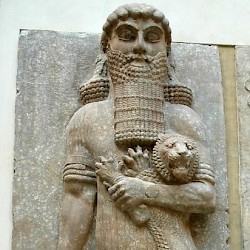 Khorsabad, Lion-taming spirit ("Gilgameš")
|
 Gortyn, Inscription with laws
|
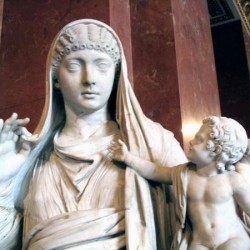 Messalina
|
 Bawit, Coptic church, Model
|
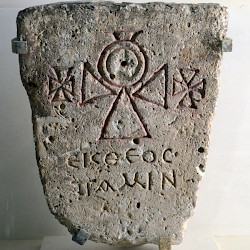 Achmim, Funerary stela of Pamim
|
 Figurine of an Etruscan warrior
|
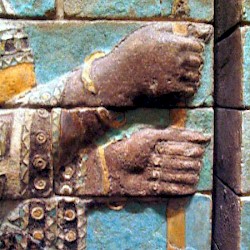 Susa, Soldiers' Relief
|
 Egypt, Byzantine textile, Erotes picking grapes
|
 Susa, Inscription of Nicocles
|
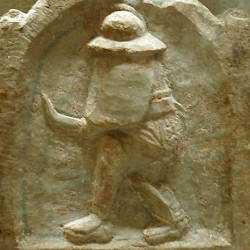 Thyatira, Relief of a gladiator (thraex)
|
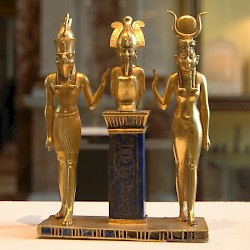 Horus, Osiris, Isis
|
 Madaba, Funeral inscription of Itaybel
|
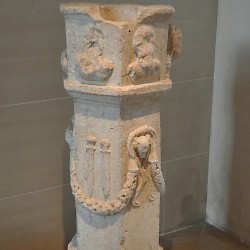 Thelsae, Nabataean altar
|
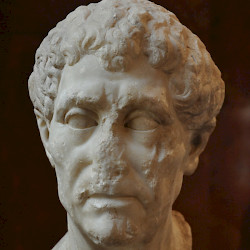 Portrait of a Roman man (CE 070-100)
|
 Statuette of Raherka, inspector of the scribes, and his wife Merseanch
|
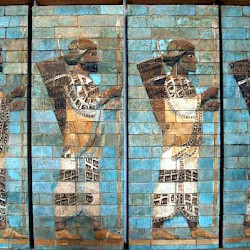 Susa, Soldiers' Relief
|
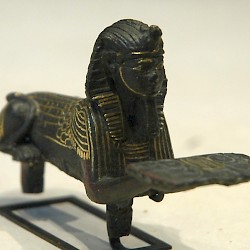 Sphinx of king Siamun
|
 Statuette of a hippopotamus
|
 Antiochus VI Dionysus
|
 Tepe Sialk, Pot from the fourth millennium BCE, decorated with an ibex
|
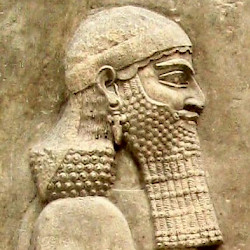 Khorsabad, Relief of Sargon and Sennacherib, prince Sennacherib
|
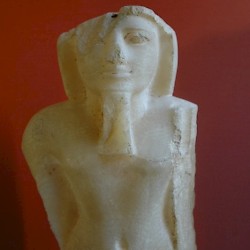 Merenptah
|
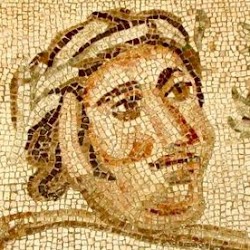 Bishapur, Palace, Mosaic of a Dionysiac head
|
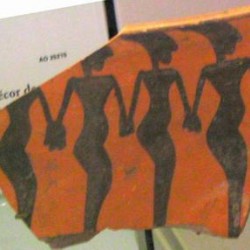 Rhagae, Dancers on a piece of pottery
|
 Susa, The Awan King List
|
 Cleopatra VII Philopator in Egyptian style
|
 Susa, Apadana, Inscription DSf (Babylonian)
|
 Idalion, orientalizing gold dish
|
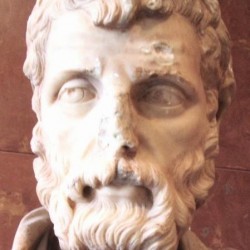 Herodes Atticus
|
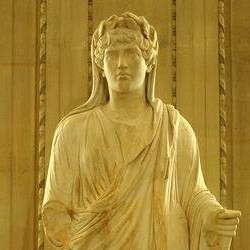 Cyrene, Statue of Antinous
|
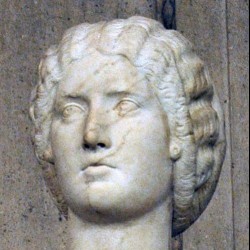 Didia Clara
|
 Antinoopolis, Coptic textile, Nilotic scene (including nilometer)
|
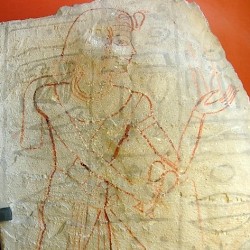 Drawing of Ramesses VII
|
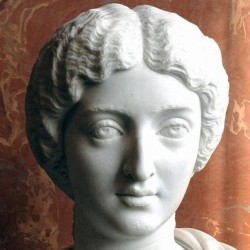 Faustina II
|
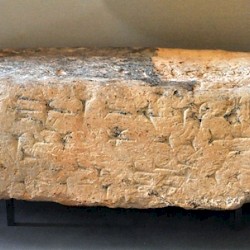 Nimrud, Northwest Palace of Aššurnasirpal II, Foundation Inscription
|
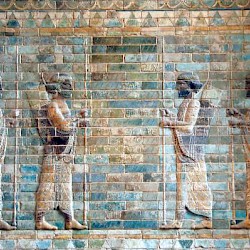 Susa, Soldiers' Relief with inscription
|
 Head of Croesus on a Greek vase
|
 Persian nobleman; statue from Egypt
|
 The Azara herm
|
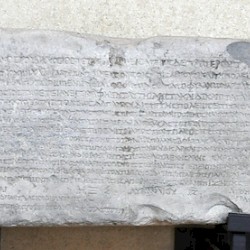 Susa, Letter from Artabanus II, requesting the appointment of one Hecataeus as treasurer
|
 Statuette of a Libyan
|
 Byzantine, Dromedary-shaped lamp
|
 Sardes, Temple of Artemis, Relief of the "Mistress of the animals". (The archer partly visible to the right must be Heracles.)
|
 Coptic tunic
|
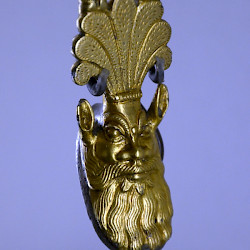 Achaemenid jar with representation of Bes
|
 Taharqo venerating the falcon-god Hemen
|
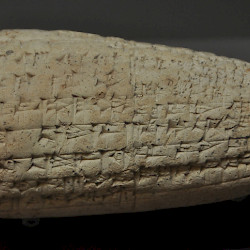 Sippar, Cylinder with a building inscription from the reign of Hammurabi
|
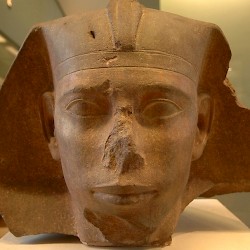 King Djedefra
|
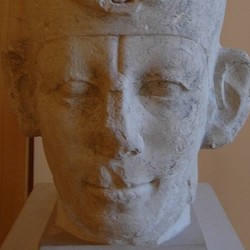 Senusret III
|
 Antinoopolis, Coptic textile, Praying man with candelaber and ankh
|
 Apries
|
 Sarcophagus with the body of Hector
|
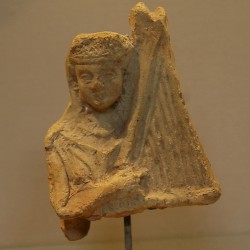 Susa, Hellenistic or Parthian figurine of a harpist
|
 Marib, Dedication to Almaqah
|
 Bishapur, Palace, Mosaic of man dressed as an ostrich
|
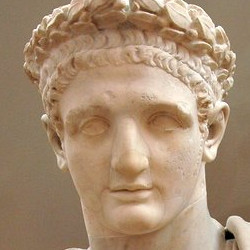 Domitian
|
 Bishapur, Palace, Stucco apse
|
 Seleucus I Nicator
|
 The Azara herm
|
 Susa, Weight from Didyma
|
 Ajax and Cassandra.
|
 Ptolemy III Euergetes
|
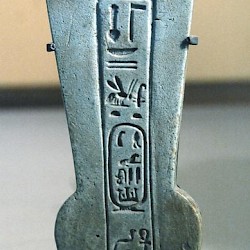 Amulet of Darius
|
 Khorsabad, Lamassu
|
 Yemen, Dromedary pendant
|
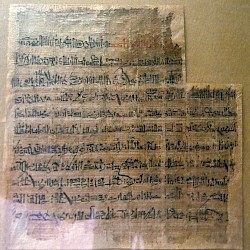 An Egyptian poem about the battle of Kadesh
|
 Utica, Funeral stela
|
 Fayyum, Coptic chalice
|
 Susa, Soldiers' Relief, Lion
|
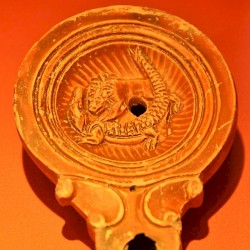 Utica, Oil lamp with a lion and a crocodile
|
 Eshnunna, Relief of Ištar
|
 POWs being led away on an Akkadian victory stele
|
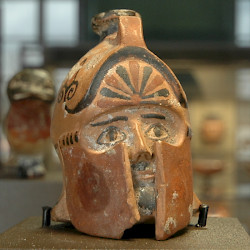 Rhodes, Head-shaped aryballos
|
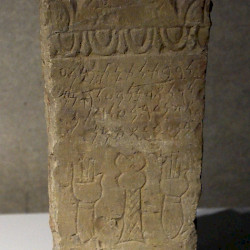 Hadrumetum, Sanctuary of Baal Hammon, Punic stela with three baetyls
|
 Demetrius Poliorcetes
|
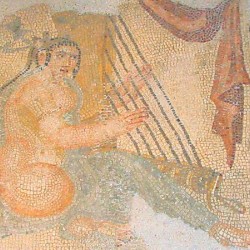 Bishapur, Palace, Mosaic of a musician
|
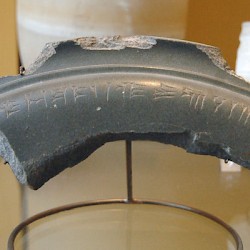 Susa, Rim of a cup with the name of Xerxes
|
 The Azara herm
|
 Tayma, Taymanite inscription
|
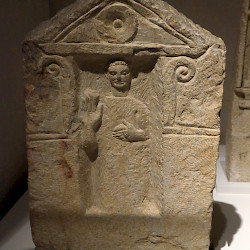 Hadrumetum, Sanctuary of Baal Hammon, Punic stela
|
 Sippar, Victory stela of Naram-Sin
|
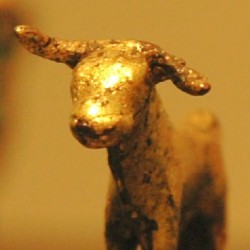 Byblos, Temple of Baalat, Figurine of a bull
|
 Informal portrait of Sobekhotep IV
|
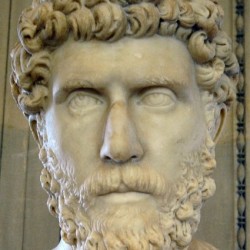 Aelius Caesar
|
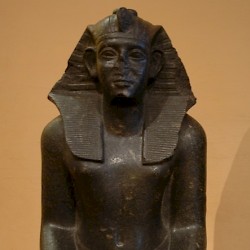 Sobekhotep IV
|
 Assos, Temple of Athena, Relief of two bulls
|
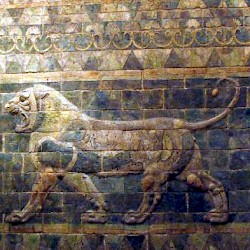 Susa, Soldiers' Relief, Lion
|
 Leo I
|
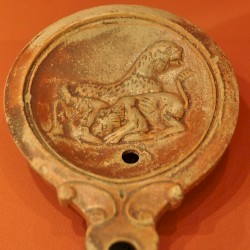 Utica, Oil lamp with a lion and a panther
|
 Upper part of the Codex of Hammurabi; taken from Babylon to Susa, it was excavated in what is now Iran.
|
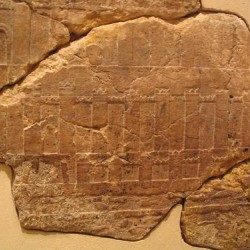 Nineveh, Palace of Aššurbanipal, Relief of Arbela
|
 Caere, Banditaccia necropolis, Wall painting of an archer
|
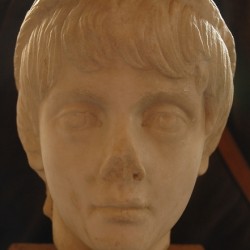 Annius Verus
|
 Mask of a Sumerian
|
 Corbulo
|
 Tayma, Relief of a sacrifical meal; Assyrian influence
|
 Cartouche of Osorkon I
|
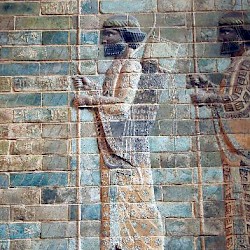 Susa, Soldiers' Relief
|
 The Azara herm
|
 Senusret III
|
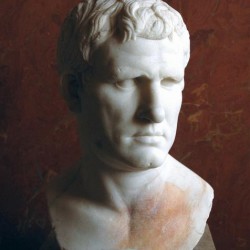 Agrippa
|
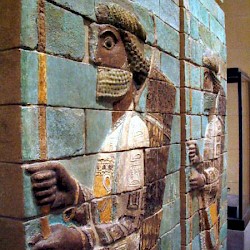 Susa, Soldiers' Relief
|
 Cleopatra II or III as Isis
|
 Susa, Temple of the Šutrukids, Relief
|
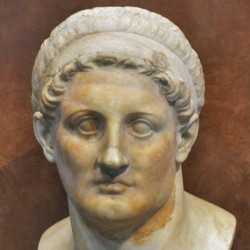 Ptolemy I Soter
|
 Tayma, Nabataean votive stela
|
 Susa, Relief with the sacrifice of goat
|
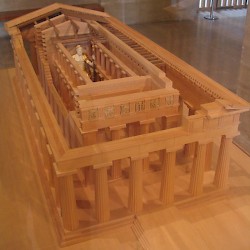 Olympia, Temple of Zeus, Model
|
 Socrates
|
 Tayma, Aramaic funerary inscription
|
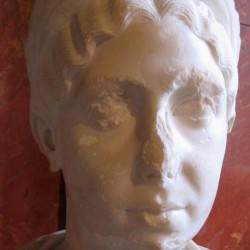 Julia Mamaea
|
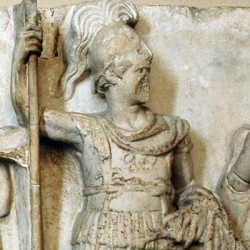 Relief of a Roman officer
|
 Julia Domna
|
 Megara, Figurine of two hoplites
|
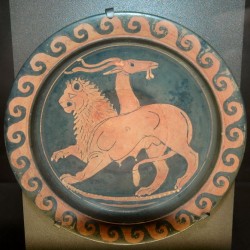 Greek plate with a picture of the Chimaera. Louvre, Paris (France)
|
 Lagash, Vulture Stele, Sumerian phalanx
|
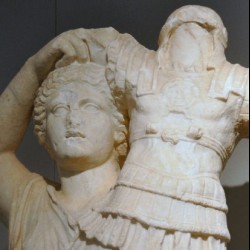 Apollonia, Relief to commemorate the battle of Actium
|
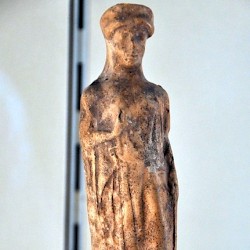 Kition, Figurine of a woman
|
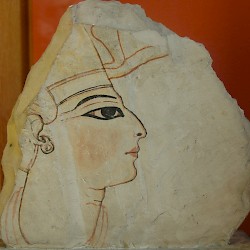 Ramesses IV
|
 Ptolemy XII Auletes
|
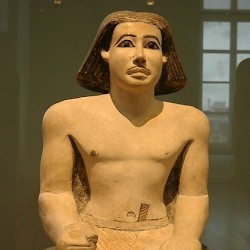 Keki, the courtier
|
 Eretria, Two-headed phial
|
 Susa, Temple of the Šutrukids, Goddess
|
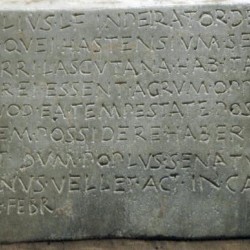 Lascuta, Imperator inscription
|
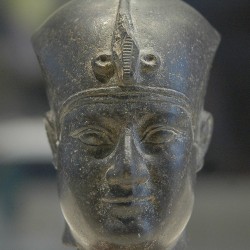 Nectanebo I wearing the war crown
|
 Berenice II
|
 Dedication by Ilîmagud Mayfa
|
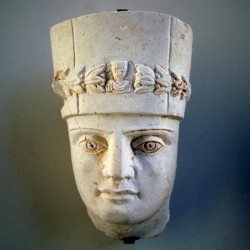 Palmyra, Tombstone of a priest
|
 Dibon, Mesha Stela
|
 Idalion, statue of Melqart
|
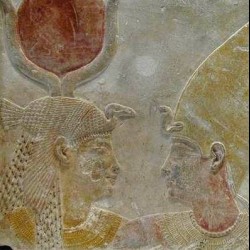 Saqqara, Serapeum, Relief of Isis and Nectanebo II
|
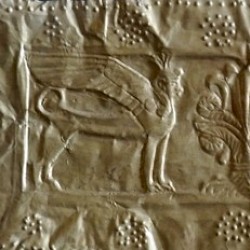 Enkomi, Late Bronze pectoral with sphinxes
|
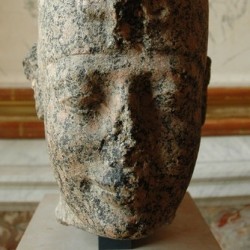 Nectanebo I, wearing the crown of Upper Egypt
|
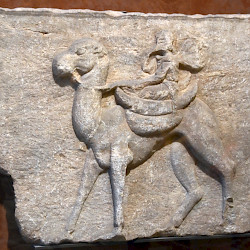 Alexandria Troas, Psyche on a dromedary
|
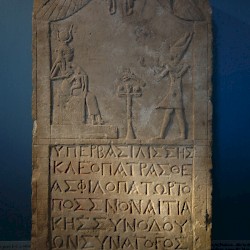 Soknopaiou Nesos, Stele of Isis, Horus, and Cleopatra VII Philopator
|
 Susa, Stela of Šutruru
|
 The Azara herm
|
 Susa, Apadana, Inscription DSf (Elamite)
|
 Susa, Treaty between Naram-Sin and Elam
|
 Choga Zanbil, Ziggurat, Doorknobs (Paris)
|
 Smyrna, Diadumenianus
|
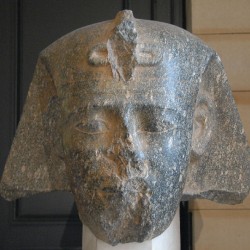 Amasis
|
 Aššur, Annals of Tikulti-Ninurta II
|
 Susa, Funerary portrait
|
 Bowl from Tepe Hesar I
|
 Cherchell, Inscription of Micipsa
|
 Psammetichus I
|
 Timna, Dedication by Rathad'il
|
 Susa, Soldiers' Relief
|
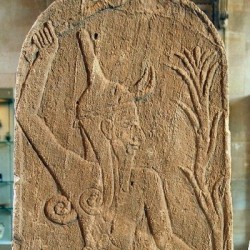 Ugarit, Stele of the "smiting god"
|
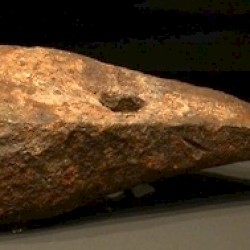 Khorsabad, Iron tool
|
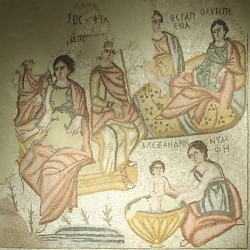 Baalbek, Mosaic of the Birth of Paris
|
 Tombstone of Iglum, son of Sa'adillat
|
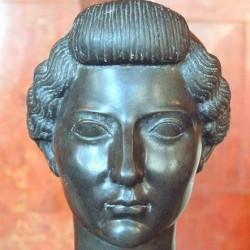 Livia (Paris)
|
|
|
|











































































































































































































































































































